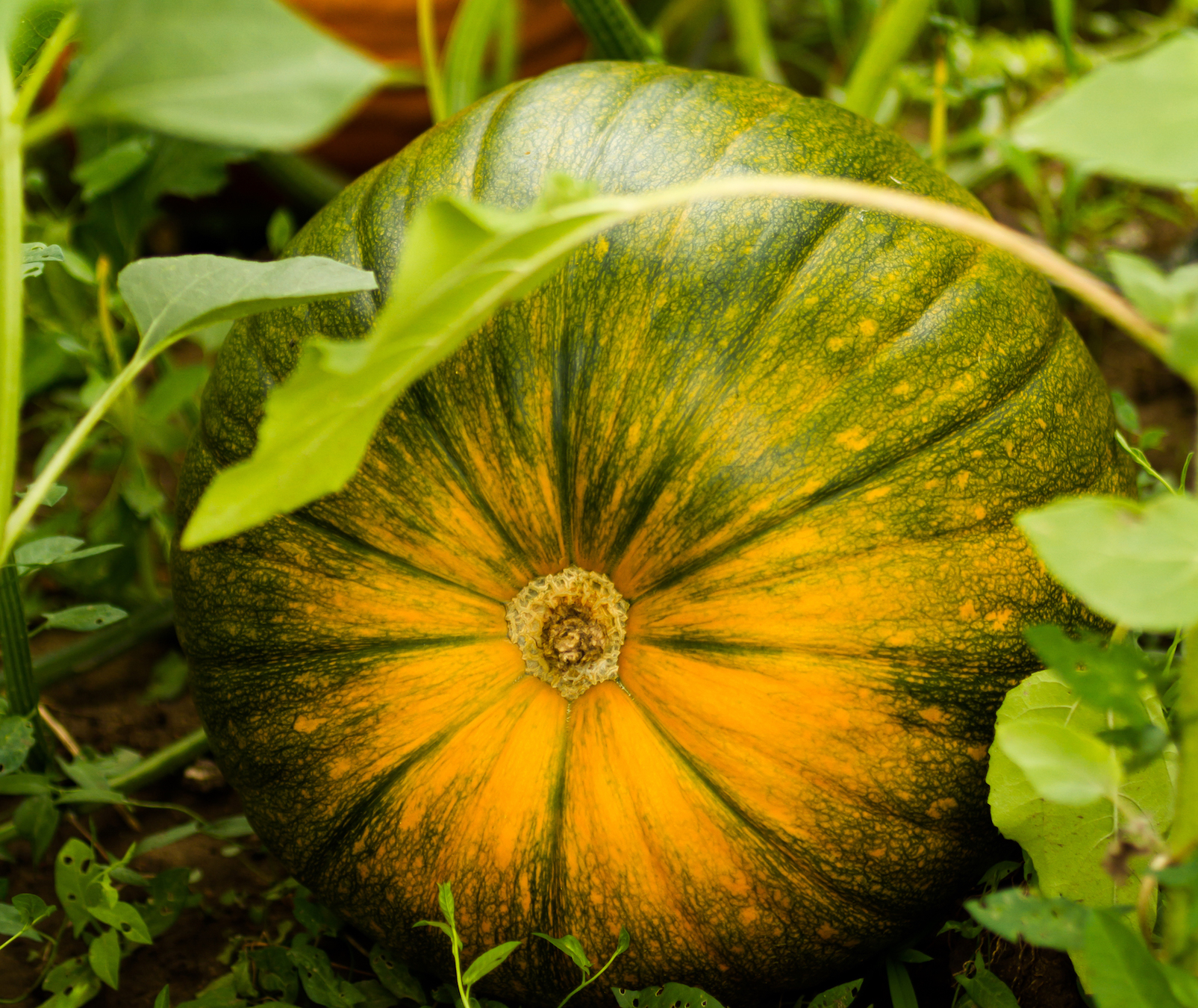
Photo Credit
Maximkabb/Getty
Botanical Name
Cucurbita maxima, C. moschata, C. argyrosperma
Plant Type
Sun Exposure
Bloom Time
Flower Color
Subhead
From spooky jack-o'-lanterns to homemade pies, learn how to plant, grow, and store pumpkins
Read Next
Types
Every pumpkin has a best purpose. When choosing a pumpkin, think about what you want to do with it. All pumpkins are technically edible, but ornamentals are better for carving, and other pumpkins are best for cooking.
Miniature Pumpkins
Miniature pumpkins are very productive and easy to grow, sometimes producing up to a dozen fruits per plant.
- ‘Jack Be Little’, a miniature variety, is dual purpose. Store-bought shiny (painted) ones make an ideal decoration for a holiday table. Remove the seeds from farm- or homegrown specimens and then bake them for a tiny treat. Vine variety. Days to maturity: 90 to 100.
- ‘We-B-Little’ is an All-America Selection winner, and ‘Munchkin’ is another great miniature pumpkin.
Pumpkins for Carving
- ‘Autumn Gold’ is great for carving and decorating. All-America Selection winner. Vine variety. Excellent for jack-o’-lanterns. Days to maturity are generally 100 to 120.
- The larger ‘Magic Lantern’ and ‘Merlin’ are great for carving and decorating.
Giant Pumpkins
- ‘Dill’s Atlantic Giant’ jumbo variety can grow to 200 pounds. Great for those who want to grow a ginormous pumpkin. Vines will spread to 25 feet, so space is a must. Days to maturity are 130 to 160, so plant early! Thin to the best one or two plants. Feed heavily but keep cultivation shallow. Remove the first two or three female flowers after the plants start to bloom so that the plants grow larger with more leaf surface before setting fruit. Allow a single fruit to develop and pick off all female flowers that develop after this fruit has set on the plant. Take care that the vine doesn’t root down near the joints to avoid breakage.
- ‘Big Max’, ‘Big Moon’, ‘Jack O’ Lantern’, and ‘Funny Face’ are some of the best giant pumpkins for carving.
Perfect Pumpkins for Pies
- ‘Sugar Treat’ is excellent for cooking and baking. Days to maturity are generally 100 to 120. ‘Hijinks’ and ‘Baby Bear’ are both All-America Selection winners and have sweet flesh for pumpkin pie.
- ‘Cinderella’s Carriage’ is also perfect for pies or soups.
- ‘Peanut Pumpkin’ also produces very sweet flesh and can be great in pumpkin pie or pumpkin puree.

Colorful Decorative Pumpkins
- ‘Jarrahdale’ has blue-green skin and makes for great decorations.
- ‘Pepitas Pumpkin’ is orange and green.
- ‘Super Moon’ is a large white pumpkin.
Gardening Products
Cooking Notes
- See how to clean a pumpkin for cooking.
- Don’t forget about the seeds! Roast them with salt or cinnamon for a tasty treat.
Thank you for such a thorough article & accompanying resources.
I have done some research regarding planting in grassed over fields & haven't found any pros/cons, hoping to learn about how to use the resources I have. I'm disabled & unable to do a lot of manual labor- such as digging out new garden beds/fields. I do have a horse pasture that receives 80% southern exposure daylight & aprx 10-15% shade from tall forest mid morning throughout Summer. The pasture is fallow & manure aged. Would pumpkins do well if I dug out larger planting holes, place aged compost, bonemeal, and soil into holes, fertilize regularly with fish emulsion, and let the vines ramble?
This ground drains easily, yet my plants stay healthy. Do I need to worry about grass possibly trapping moisture on the pumpkins? Are there other risks with grass that I should know? Will this equate to larger battles with insects/blights/etc?
THANK YOU!
It seems to me that in the autumn this issue becomes especially relevant. Pumpkin season is just beginning, and Halloween is approaching, everyone will be carving scary decorations out of pumpkins for their home, and you can always plant seeds. I already had this experience at one time, but it didn’t work out the first time.
I really enjoyed reading this article about pumpkins! It was informative and engaging. I especially liked the list of different ways to use pumpkins. I'm always looking for new and creative ways to use this versatile vegetable.
{Pumpkins} are a fall favorite for a reason. They're versatile, delicious, and nutritious. They can be used in sweet or savory dishes, and they're a great source of vitamins, minerals, and fiber.
At the beginning of this article you say that ideally 1 pumpkin plant would have 1,000 square feet of space to grow. Is that correct? That seems excessive.
I have a pumpkin that’s a year old! Kept it inside the house during the winter months and then put it outside this summer!!
It’s still in great shape, solid and heavy!! How can this be???
Color has changed somewhat going to a dark green!
Uhh.. I think that means it's rotten
Thanks for the great info about pumpkin growing! I have an issue with two pumpkin varieties I’m growing in different raised beds, I’m wondering if you might have any advice. I’ve been waiting for the female flowers to come up. I finally saw them budding up on my vines but after a few days, they turn yellow and pop off the vine. Am I not fertilizing enough maybe? Thanks again!
Hi, Wylie, Lots of things can cause lack of pollination. Some of the most common causes are lack of pollinators; weather, specifically extreme heat or cold temps. Varieties differ in their reaction to temp changes. Nitrogen levels in the soil can also affect fruit set. Excess nitrogen results in vigorous vine growth and delays flowering. You might do a soil test to assess its composition. We hope this helps!
The Rouge Vif D’Etampes pumpkin is a gorgeous shape and color, is delicious and a keeper! And has been around a long time.
- « Previous
- 1
- 2
- …
- 10
- Next »











Comments